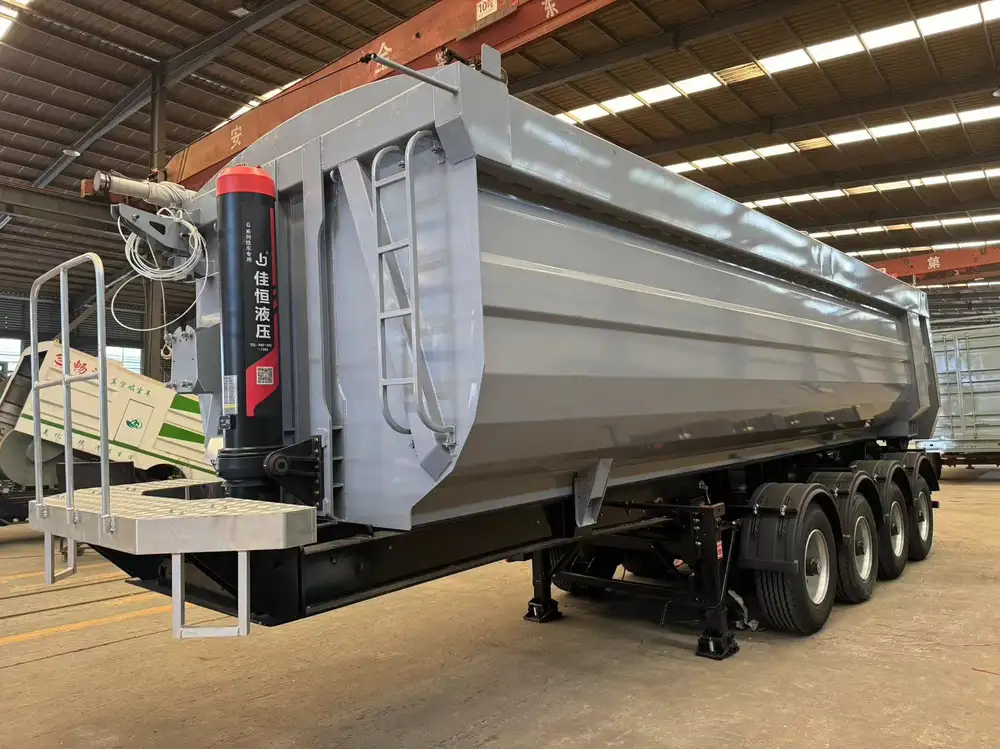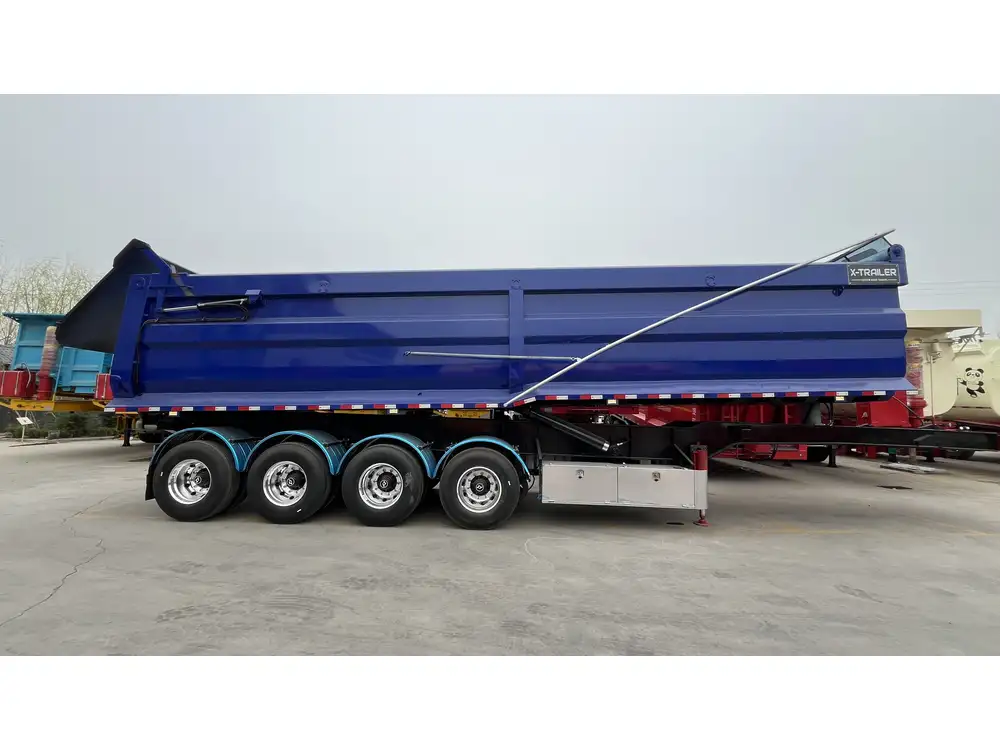In the world of logistics and heavy transport, understanding how often to dump a trailer is crucial for operational efficiency, cost management, and equipment longevity. The frequency of dumping can significantly impact various factors, including the types of materials being transported, the specific trailer model in use, and operational logistics. This guide aims to delve deeply into these aspects, offering insights and information valuable for both novice and experienced operators.
Understanding Trailer Dumping
What is Dumping?
Dumping a trailer involves the process of unloading its contents. For semi-trailer owners, this operation is not merely a matter of emptying the load but ensuring that it’s done efficiently and safely. Various types of trailers—from flatbeds to tipper trailers—exist for different kinds of cargo. The method and frequency of dumping can vary accordingly.

Key Factors Influencing Dump Frequency
1. Type of Cargo
Different materials dictate varied dumping frequencies:
| Cargo Type | Recommended Dump Frequency | Description |
|---|---|---|
| Aggregates | Daily | Materials like sand, gravel, or stones used in construction. |
| Liquid Bulk | Every load | Milk, chemicals, or oil require prompt unloading to maintain quality. |
| Scrap Metal | Weekly | While recyclable, these loads benefit from less frequent dumping but need management. |
| Agricultural Produce | As needed | Fresh produce requires rapid unloading to avoid spoilage. |
2. Load Size and Weight
The size and weight of the load significantly impact how often a trailer needs to be dumped. Heavier and larger loads may necessitate more frequent dumping to ensure structural integrity and to prevent overloading:
- Overloaded Trailers: Surpassing weight limits can lead to decreased fuel efficiency, increased wear on trailer components, and legal repercussions.
- Optimum Load Management: Maintaining proper weight can lead to better handling, improved safety, and longer equipment life.

3. Distance Traveled
Long-haul trips can affect unloading schedules:
- Local Deliveries: Frequent trips allow for daily dumping, minimizing on-road weights.
- Long-Distance Hauls: Operators may have to manage longer durations between unloads, potentially affecting the perishability of loads.
4. Regulatory Compliance
Understanding local regulations regarding load types and timings is crucial. Often, regulations dictate how often certain materials can be held on route without being dumped, particularly for hazardous materials.
The Dumping Process: Best Practices

Pre-Dump Checklist
Before initiating the dump process, conduct a thorough check to avoid mishaps:
- Secure Site: Ensure that the unloading site is safe and prepared for operations.
- Equipment Inspection: Confirm that lifting and dumping mechanisms are functioning correctly.
- Load Protection: Maintain necessary tarps or covers to prevent spillage during dumping.
Steps to Efficiently Dump Your Trailer
The process of dumping should be methodical to maintain safety and efficiency:
- Position the Trailer: Align correctly to avoid damaging unloading mechanisms.
- Set the Brakes: Engage trailer brakes for stability during unloading.
- Utilize Dumping Mechanisms: Employ hydraulic systems or gravity to facilitate the process, depending on trailer type.
Common Dumping Techniques
| Technique | Description |
|---|---|
| Hydraulic Dumping | Utilizes hydraulic systems to lift and tilt the trailer, ensuring complete unloading. |
| Gravity Dumping | Relies on gravitational force; suitable for lighter and bulk materials. |
| Manual Unloading | Used for specialized loads or non-standard equipment where mechanical methods are unfeasible. |

Cost Implications of Dump Frequency
Budgeting for Dumping Operations
Frequent dumping incurs costs, which can accumulate quickly:
- Fuel Consumption: More trips lead to higher fuel expenses.
- Labor Costs: Increased manpower for more frequent unloads.
- Maintenance Costs: More wear and tear on equipment requiring regular maintenance.
Balancing Efficiency and Costs
Striking a balance between the frequency of dumps and operational costs is crucial. Consider the following strategies:
- Map Out Efficient Routes: Plan efficient routes that minimize travel and maximize load efficiency.
- Invest in Technology: Implement tracking systems to optimize load management and route planning.
- Regular Maintenance: Ensure trailers are maintained to enhance efficiency and reduce downtime.

Conclusion: Finding the Right Frequency for Your Operations
Determining how often to dump a trailer is not a one-size-fits-all solution. The ideal frequency is contingent upon various factors including cargo type, load size, distance traveled, and regulatory considerations. By thoroughly assessing these elements, operators can establish a dumping schedule that enhances operational efficiency, reduces costs, and maintains the integrity of the semi-trailer.
Frequently Asked Questions (FAQs)
How do I know if my trailer is overloaded?
Monitoring the weight of your load at regular intervals using weight management systems can help ensure you never exceed legal and safe limits.

What are the risks of not dumping a trailer on time?
Delays can lead to material degradation, increased regulatory scrutiny, and potential fines associated with overloading and safety violations.
Can dumping too often lead to issues?
While frequent dumping can prevent overload risks, excessively rapid cycles may accelerate wear and tear on trailer systems.
What maintenance should I perform related to dumping mechanisms?
Regularly checking hydraulic systems, inspecting dump trailers for alignment, and ensuring locks and seals are functioning can enhance safety and functionality.



